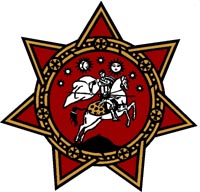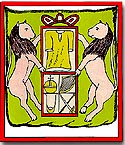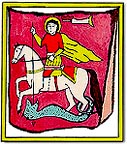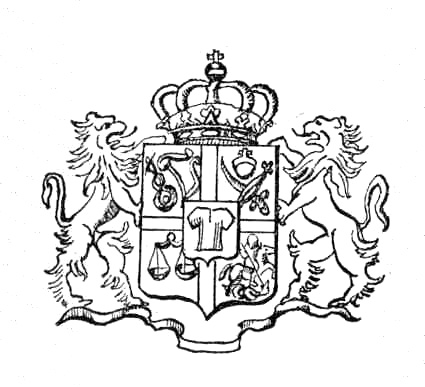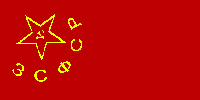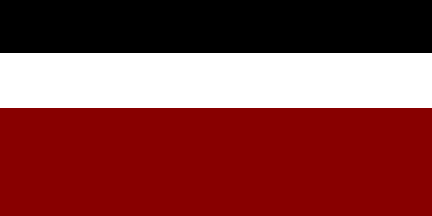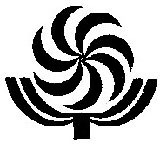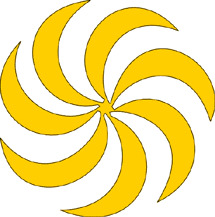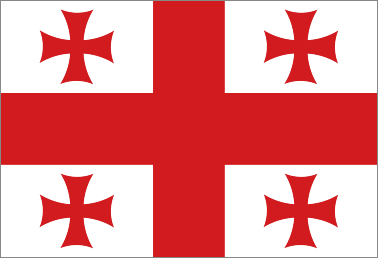 |
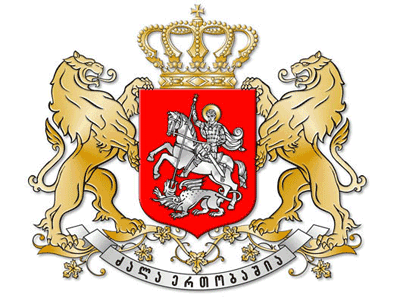 |
National Flag in 1991-2003 was the flag of 1918 Republic. It came into use when Georgia proclaimed its independence in 1917 and was resurrected upon the breakup
of the Soviet Union. The dark red colour is regarded as the national colour.
The black and white stripes stand for the country's tragic past and hopes
for the future. Flag was used between 1918 and 1921 (with variations)and then readopted on 14 November 1990; it was changed to the five-cross flag in January 2004. The coat of arms adopted 11 December 1990.
The official Coat of Arms represent octagonal
with image of St. George in the center, and images of the St. George, with
the Sun, the Moon and 5 planets (Mercury, Venus, Mars, Jupiter, Saturn)
above him.
The
Flag of Georgia in V-XI centuries
The flag representated
a white banner with an image of St. George in the center.
The
Flag of Georgia in XII-XV centuries; Often used in religious and state
ceremoniesthroughout the 1990s, this banner was declared national flag in January 2004.
Originally, this banner was attributed to Jerusalem
and symbolized the Holy Cross and nails with which Jesus Christ was crucified.
The historical tradition constituted one of
the reasons for accepting this flag as a state one. Starting from the Early
Medieval, the Georgians founded numerous monasteries in Palestine. Among
those in the area of Jerusalem were St. Saba in the Judean wilderness,
the convent near the place of the martyrdom of St. James the Great and
the Monastery of the Holy Cross. In the XIII - XIV centuries the
Georgians enjoyed a privileged condition above the other Christians. This
was especially so after glorious years of King David and Queen Tamar, and
during the dynasty of the Mameluk Sultans, who often were originally form
Georgia. James de Vitry wrote that while most Christians
entered Jerusalem with difficulty and lived a most tenuous existence, the
Georgians were able to move about freely. In fact, when Georgian pilgrims
arrived they entered the city with flags unfurled and held high. They were
not required to pay the tax which was imposed upon other Christians.
(Iacobus de Vitriaco, Historia Ierosolymitana seu Orientalis, c. LXXIX
(De Sandoli, Itinera, III, 352-353).
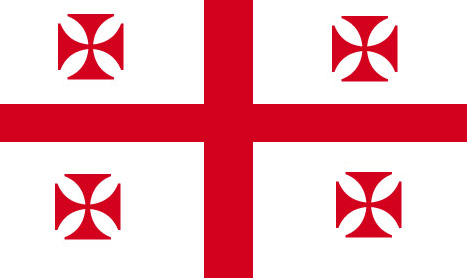 |
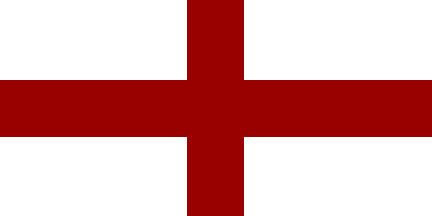 |
The
Royal Banner and Coat of Arms of the Bagration Dynasty
The flag can be divided into four panels:
Central Panel: The Tunic
of Our Savior Jesus Christ - According to the tradition, the Tunic
was recovered after the Crucifixion and brought to Mtskheta, ancient capital
of Georgia, where it is buried under the Svetitskhoveli Cathedral.
Top Left Panel: The Slin
with which David killed Goliath and David's harp, symbolizing Bagration's
claim to descent from King David of Israel.
Top Right Panel: The
Royal Orb and Crossed Swords
Bottom Left Panel: The
Scales of Justice
Bottom Right Panel: St.
George killing the dragon.
St. George is the patron saint of Georgia.
Though "Georgian" St. George has many archaic features, combing charcteristics
of pagan deities. It is believed that there are more than 365 churches
built to St. George in Georgia
Flags
of the Regions of Georgia XIII-XVIII centuries, according to Vakhushti
Batonishvili
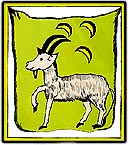
Abkhazeti |
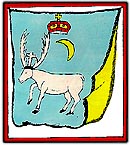
Imereti |
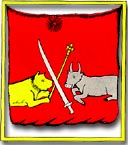
Kartli |
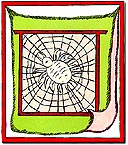
Rani |

Svaneti |
|
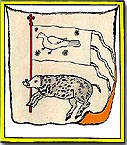
Odishi |

Kakheti |
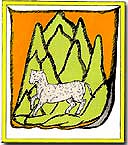
Ovseti |
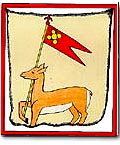
Shirvani |
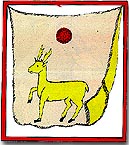
Guria |
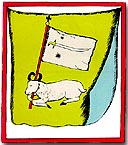
Samtskhe-Javakheti |
Flags
of the Transcaucasian Federation, 1918-1936/37
The Transcaucasian federation was established
in the beginning of 1918 and lasted for some three months, until Georgia
proclaimed independence in May 1918. The Georgian flag during the membershipo
in this short-lifed federation was a tricolor based on the German banner.
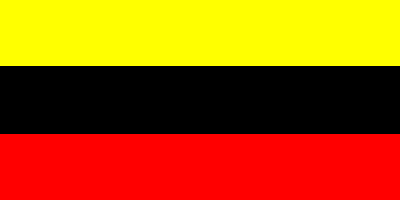
After the annexation of Georgia in February
1921, the Transcaucasian Federation was re-established, combining Georgia,
Armenia and Azerbaidjan, and later joined the Union of Soviet Socialist
Republics. During 1922-1937 period the state flag of Georgia was that of
the Federation.
The initial flag of the re-established Federation
was red banner with initials of name of this federation - ZSFSR [Transcaucasian
Soviet Federation of Socialist Republics]. In thirties the flag was modified,
and Star with hammer and sickle in it were added.
Official
Flag in 1918-1921
After almost 200 years of Russian dominance,
Georgia became independent in 1918. The national flag in this period (1918-1921)
was the same as the present flag though the the dimensions were slightly
different. This was flown as standard of the Transcaucasian Federation
22 April 1918 when the Federation was formed, and as the flag of independent
Georgia from 26 May 1918 until the Red Army invaded in February 1921.
The Georgian flag was designed by Jakob Nikoladze
who won a contest, and was accepted by the Georgian authorities on 25 March
1917. O 22 May 1918, Georgia proclaimed independence under this flag.
Official
Flag in 1940s
Flag of the Socialist Republic of Georgia in
1940s. It was designed on the patter on the RSFSR flag - the red banner
with inscription in Georgian "Saqartvelos SSR" - "
S[oviet] S[ocialist] R[epublic]
of Georgia "
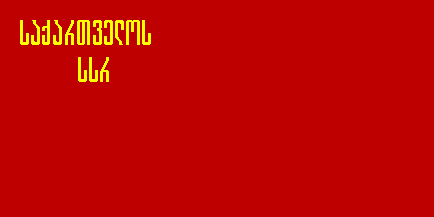
Flag and Coat of Arms in 1951-1989
State flag of Georgia was adopted on 11 April 1951.
Red hammer and sickle with star in a blue sun in canton, blue bar in upper
part of flag. Coat of Arms contained a hammer and sickle superimposed on the background of the Caucasus Mountains, with a motto "Workers of All Countries Unite" in Georgian and Russian languages written in circle around them. The outer layer of the coat of arms represents a seven-angled star within a circle, with a Georgian traditional motif of vine branches and leaves used to create an elaborate border.
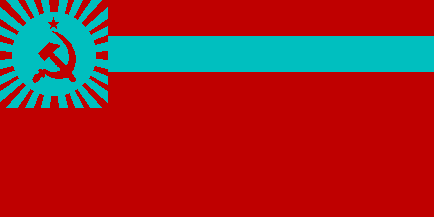
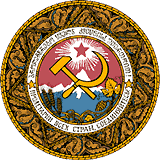
Borjgali
Borjgali is an ancient Georgian symbol of the
Sun and is related to the Messopotamian and Sumerian symbols of the eternity
and the Sun. The left image is of complex structure. It is usually depicted within the Circle, that symbolises the Universe. In the lower part of the image there is the Tree of Life. The roots of the Tree go into the "past" and its palm-like branches are for the "future". The Tree itself sumbolizes the continuity between past, present and the future. The Borjgali is usually placed above the tree and symbolizes the Sun, eternal movement and Life.
Nowadays, the symbol is used in Georgian IDs and passports, as well
as on currency. Also Borjgali is used as a seal of the Basque-Georgian
Friendship Association.
If
you surfed directly to this page, please visit our main page
![]() Current
Flag
Current
Flag
![]() The
Flag of Georgia in XI-XII centuries
The
Flag of Georgia in XI-XII centuries
![]() The
Royal Banner and Coat of Arms of the Bagration Dynasty
The
Royal Banner and Coat of Arms of the Bagration Dynasty
![]() Flags
of the Regions of Georgia XIII-XVIII centuries, according to Vakhushti
Batonishvili
Flags
of the Regions of Georgia XIII-XVIII centuries, according to Vakhushti
Batonishvili
![]() Flags of the Transcaucasian
Federation, 1918-1936/37
Flags of the Transcaucasian
Federation, 1918-1936/37
![]() Official
Flags in 1918-1921
Official
Flags in 1918-1921
![]() Official
Flag in 1940s
Official
Flag in 1940s
![]() Official
Flag in 1951-1989
Official
Flag in 1951-1989
![]() Borjgali
Borjgali
![]() Coat
of Arms of the Georgian Cities
Coat
of Arms of the Georgian Cities



